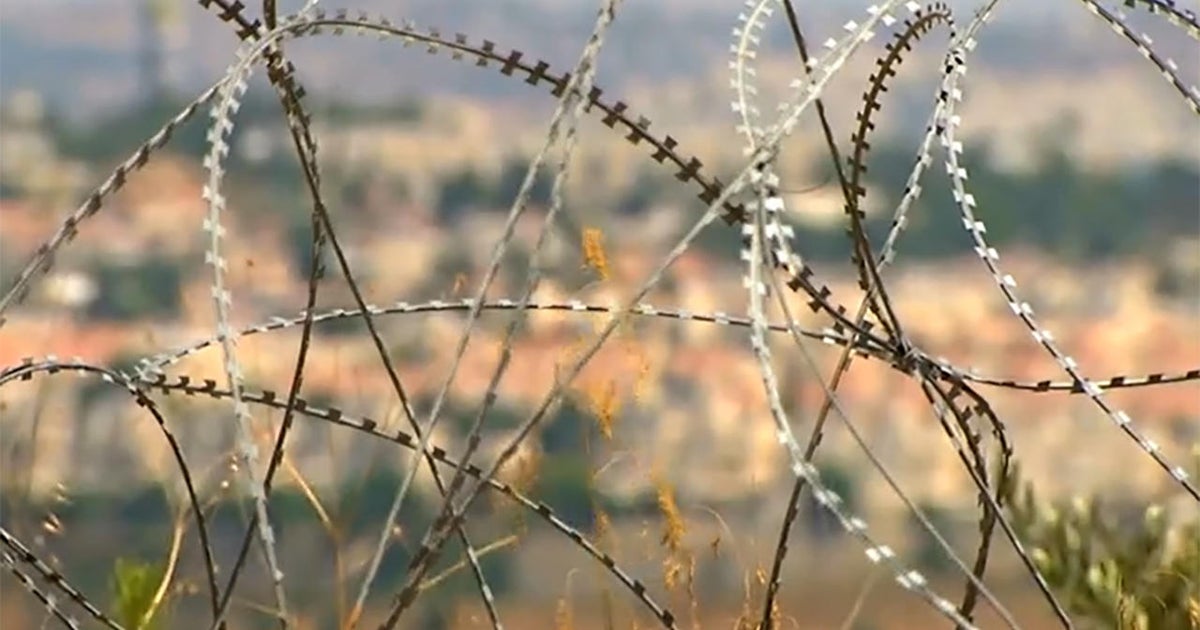Book excerpt: "When McKinsey Comes to Town"
New York Times investigative journalists Walt Bogdanich and Michael Forsythe examine the influence of one of the leading consulting firms, McKinsey & Company, in their book "When McKinsey Comes to Town: The Hidden Influence of the World's Most Powerful Consulting Firm" (Random House).
Read the excerpt below, and don't miss Erin Moriarty's interview with Walt Bogdanich and Michael Forsythe on "CBS Sunday Morning" October 9!
Introduction
In Gary, Indiana, just past the rusting bridges, peeling paint, and railroad switching station sits a green well-tended plot of land that seems oddly out of place. It is a grassy knoll of bushes and trees overshadowed by the drab, hulking remains of a plant run by what was once the world's biggest, most profitable company, the U.S. Steel Corporation.
To the right, a towering furnace and smokestacks rise high against the northeastern sky. Basic steel is made there, forged in heat so intense the metal resembles white-hot lava flowing from a volcano. Nothing is soft or forgiving, only concrete, fire, and metal. To the left, rows of buildings with gabled roofs stretch to the western horizon. This is where steel is treated to make it less brittle before rolling it into massive coils for shipment to places near and far.
Occupying seven miles of lakefront, the steel plant has two hundred miles of railroad tracks, its own hospital, fire department, and police force. In years past, the company did its civic duty by sending workers with good voices and top hats to sing Christmas carols at grade schools across the city.
Inside the green oasis is a granite memorial with a book describing how 513 people died from accidents inside the steel mill. This book of the dead, covered in thick plastic and soot, tells of workers crushed by railroad cars, trucks, and steel. Others fell to their death, were torn apart by explosions, asphyxiated, burned, buried alive, and even drowned. Forty-one died by electrocution. The labor reporter Joseph S. Pete wrote that steelworker funerals are often closed-casket affairs. The book of the dead explains why.*
* Walt Bogdanich writes: "In the 1970s, I was one of twenty-seven thousand employees at U.S. Steel. My father also worked there, as did my brother and most of my relatives. Using a long metal hook, I pulled hot steel rods off a roll line, then tied the bundle with metal wires. I knew steelworking was dangerous. Just weeks after I started, a twelve-year employee in my department, Robert Plunk, died after being pinned under a red-hot bar of steel—his suffering unimaginable."
Gary once held the promise of twentieth-century industrial America, a melting pot of racial and ethnic groups in pursuit of a better life, money for college, paid vacations, and pensions. From this emerged a solid middle class, two Nobel Prize winners, and the Jackson Five, as well as pollution that befouled the air and waterways.
In the last quarter of the twentieth century, the company's fortunes fell sharply because of cheap foreign steel, old equipment, and suspect management. The workforce dropped below eight thousand. Departments were closed or pared down.
The decay spread to Gary, the city U.S. Steel founded more than a century ago as "a triumph of scientific planning." By the end of the century, Gary had descended into a landscape of abandoned office buildings, stores, and churches. Rather than spend money it didn't have to tear them down, Gary rented the locations to crews filming postapocalyptic and horror movies, including A Nightmare on Elm Street and Transformers. Even a scene from the miniseries Chernobyl was filmed there.
Crime spiked, and Gary's population dropped to 69,000 from a high of 177,000 in 1960. Billboards along the steel mill's southern border reflect a population that had lost its moorings. "Shackled by Lust? Jesus Sets You Free," reads one, followed by ads for a strip club, an injury attorney, and a casino.
The year 2014, however, brought Gary's steelworkers a glimmer of hope. The company's new chief executive, Mario Longhi, hired an elite consulting firm, McKinsey & Company, to inject new ideas into the aging manufacturer. For decades McKinsey sold clients on its reputation as a firm that delivered scientific solutions to complex problems. Blue-chip companies and governments around the world hired its consultants, as did the CIA, the FBI, and the Pentagon, among others, believing McKinsey had the wisdom and wherewithal that their managers lacked.
McKinsey came to U.S. Steel with the goal of restoring the steelmaker to its iconic status as a company that built the nation's bridges, buildings, and weapons that defeated America's enemies. With McKinsey's help, U.S. Steel promised to recapture that spirit through "a relentless focus on economic profit, our customers, cost structure, and innovation"—all without sacrificing safety or harming the environment. Gary's labor force had little idea of what to expect from these highly paid consultants, some graduates of Ivy League business schools.
But steelworkers would learn soon enough, as did others before them, what can happen when McKinsey comes to town.
From the book "When McKinsey Comes to Town: The Hidden Influence of the World's Most Powerful Consulting Firm" by Walt Bogdanich and Michael Forsythe. Copyright © 2022 by Walt Bogdanich and Michael Forsythe. Published by permission of Random House, an imprint and division of Penguin Random House LLC. All Rights Reserved.
For more info:
- "When McKinsey Comes to Town: The Hidden Influence of the World's Most Powerful Consulting Firm" by Walt Bogdanich and Michael Forsythe (Random House), in Hardcover, Large Print, eBook and Audio formats, available via Amazon, Barnes & Noble and Indiebound
Watch Walt Bogdanich and Michael Forsythe on "CBS Sunday Morning":




